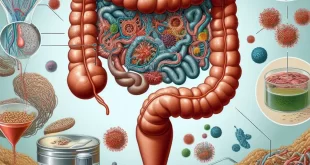Researchers have identified key cells and mechanisms behind the regenerative capabilities of lizard tails. Their ability to rebuild cartilage opens up new treatment possibilities for osteoarthritis. Lizards are among the few vertebrates capable of regenerating cartilage without it turning into bone, a skill that enables them to regrow their tails when lost. Scientists from the Keck School of Medicine have pinpointed two types of cells involved in this process and have even managed to trigger cellular regeneration. Their findings have been published in the journal Nature Communications. In the long run, these discoveries could inspire treatments for osteoarthritis, a degenerative condition that affects 9 to 10 million individuals in France alone and currently lacks a cure.
The Enigma of the Lizard’s Tail When faced with a predator threat, lizards can shed their tails, which subsequently grow back. “It’s a kind of superpower that lizards possess. They can regenerate substantial amounts of cartilage, which remains cartilage and doesn’t transform into bone,” highlights Thomas Lozito, the study’s lead author, in their press release. In fact, the majority of their skeletal structure is composed of cartilage.
Until now, researchers had not fully uncovered the cells and signals involved in this regrowth. However, they had shown that this process isn’t risk-free for the lizard, as it generates oxidative stress within the animal. A new study delved into the cellular-scale mechanism to find a way to translate and harness this cartilage regeneration in humans.
Inducing Cellular Regeneration To achieve this, researchers examined changes in gene activity within certain cells. Among those with particularly variable gene expression were fibroblasts and septoclasts. “These two types of cells work in concert and form the foundation of the regenerative principle,” the author explains. On one hand, fibroblasts construct tissue, while septoclasts, immune cells, inhibit excessive scarring (fibrosis), thus allowing the tail to regrow.
But can this phenomenon be induced in other parts of the body beyond the tail? Biologists attempted to promote cartilage reconstruction in the lizard’s legs, which unlike the tail, do not naturally regrow. The result was impressive: the implantation of septoclasts indeed led to leg regeneration. While these initial results are encouraging, the key to understanding the underlying mechanisms of regeneration lies in studying the RNA of these cells, as it plays a critical role in genetic information transport and cellular growth promotion. Subsequent research could provide deeper insights into intercellular communication and pave the way for testing septoclast implantation in mammals, starting perhaps with mice, to induce their ability to produce cartilage. These forthcoming advancements could potentially unlock innovative solutions for treating osteoarthritis, a condition that continues to impact millions of people worldwide.
 medjouel.com Study Non Stop
medjouel.com Study Non Stop



